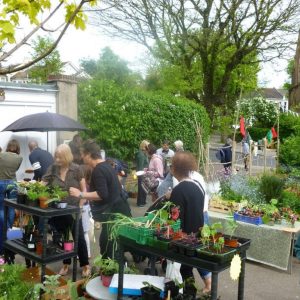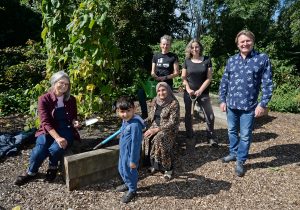How to set up a community garden
Cultivation Street was set up to pull together some of the best community gardens across the nation and tell their stories of success. This in turn will motivate others to follow their lead. We’ve seen all sorts of amazing community gardens from schools and neighbourhoods all getting together to create great outdoor spaces to enjoy and thrive in.
Now is a perfect time to start up or get involved with your own community garden project, and here are our top tips for getting underway.

Photo Credit: Stanford and Cleveland Community Garden
1. Find a space
Of course, you need to start a garden with space! Why not find an area in your town or city that could do with a bit of TLC. This could be a patch of abandoned wasteland, land outside the local shops, adjoining land on your back garden, allotments, a variety of front gardens or even grass verges.
When finding your piece of land, you need to consider the practicalities, like water, access and also the amount of space available. It’s better to start small with a view to grow bigger!
2. Approach the council
Lots of councils are keen on community gardens and they may even have an existing program for them in your area. Approach the parish, local or district councils to see if there is any support, or at least to find out the right person to talk to. You may also need to ask the council whether you can acquire a patch of land, if it’s a public space.
3. Seek advice
Next, talk to other community gardeners for advice. Check out this map to find your nearest garden centre ambassador who will be able to provide you with some valuable help and advice. The whole point of a community is to share advice and tips, and this is very beneficial.
You can also contact local schools, gardening clubs and associations that are connected with grow your own gardening. Garden centres and nurseries will also be able to help. Check out the Cultivation Street website, where we have over 165 ambassadors who will be willing to help and give free advice to people who are looking to start a community garden.

Gardener David Domoney with (L to R): Sheila Sutherland, Ravyer Osman, Rezan Mohamed, Jess Banham and Jacqui Dace at the Tinsley Community Allotment in Sheffield
Photo Credit: Tinsley Community Allotment
4. Get people involved
There are a fair few different ways you can get people to join your community garden project. Initially, contact your neighbours, family and friends to try to get them involved. Don’t use emails, its always best to go knocking on doors or make phone calls to speak to people about the project, and leave them with a motivational leaflet or flyer as they’re unlikely to commit on the spot.
Once the space is clear enough, we’d suggest setting up an open day to entice and engage with people. You don’t need to have much ready in the garden for the open day and you could hold a BBQ or picnic on the land.

5. Who will it be for?
Community gardens are useful for lots of different types of people. For example, we’ve seen gardens developed specifically for those with additional needs, children with learning difficulties or activities in retirement may help, alternatively it may just be for the local community to get together.
See what there is a need for in your area and establish a garden based around what could be lacking. For example, if there is a lack of social activities for older people in your area, starting a community garden for them would be beneficial, and is likely to get a lot of volunteers!
6. Find funds
There are a few ways you can search for funding, try to approach local businesses for sponsorship, or see if any of the council programs are able to fund you through grants. You could also hold local competitions, fetes and other events to raise funds.
A lot of community gardens get support from those who can donate things such as equipment and tools too, so don’t be afraid to ask around!

7. Plan, plan, plan!
Once you have secured the above, you can start to plan your garden. Do you want it to attract wildlife? Or perhaps grow some fruit and vegetables? Or will it be a sensory garden for those with additional needs? Work out what you want from your community garden and then plan the layout, plants etc around this.
Write a mission statement on what you aim to achieve. You could even create a simple website and draw up some plans.
2 Comments
Leave a Comment
You must be logged in to post a comment.


Excellent idea .
I was wanting to ask i am lucky enough to have a house on a 3 acre site / garden is approx 2.5 acres, can i setup something similar on my private garden , was thinking down the road of gardening for mental heath / wellbeing
Hi Richard,
That sounds like a fantastic idea! Quite a few of the Cultivation Street participants have community gardens in their back garden. Please drop us an email to [email protected] and let us know what your thinking, and we will see how we can support you. All the best
The Cultivation Street team.